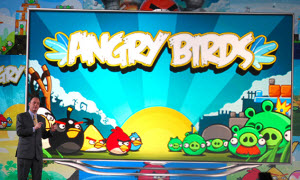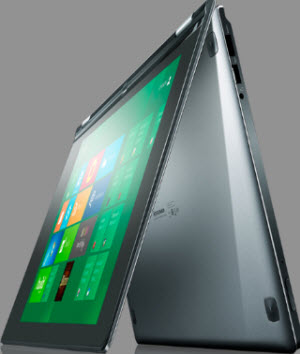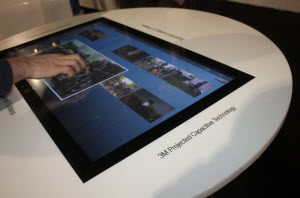 8. Apps on the TV are gathering steam
8. Apps on the TV are gathering steam
Pretty soon, you’ll be able to play Angry Birds on a Samsung TV. That’s one of many new apps coming to TV sets, which are smart enough to be connected to the internet and can download apps from web-based App Stores. Google TV, which will debut on consumer electronics gear from Sony, Vizio and LG, has more than 500 apps in the Android Market for smart TVs. Microsoft’s Xbox Live service for the Xbox 360 game console will now let you download all sorts of entertainment apps so that you can have even more sources of movies and TV shows. OnLive is also getting installed on more TVs, including Vizio and Google TV-based sets. That means that you’ll be able to watch users playing high-end games via the television set, and eventually you’ll be able to play multiplayer games on your TV, even though you haven’t downloaded anything to the TV. Web service Pandora is now available on more than 450 devices, including a bunch of TVs. Opera showed off a new TV app store at CES. GameTree TV is offering lots of games on TV sets, coming preinstalled with a number of set-top boxes. –Dean Takahashi
 9. Next-generation tablets hit the scene
9. Next-generation tablets hit the scene
It’s easy to think that technology is static, particularly once a new gadget like the tablet has been clearly defined. But the truth is that tablets are getting better and better, and the ones coming this year are going to be leaps and bounds better than last year’s models. They’re powered by some powerful chips that could do a stand-up job running computers, yet those chips are so power efficient they won’t drain the life out of machines. Nvidia showed off a tablet from Asus that uses the ARM-based Tegra 3 processor, which can generate console-like 3D graphics for games. Asustek will use the Tegra 3 in a 7-inch tablet that will sell for $249. Intel and Qualcomm also showed off a number of tablets using their chips. A number of convertible laptops were also on display at CES, where the laptop can be twisted an easily converted to a tablet computer. Lenovo showed off its IdeaPad Yoga, a laptop that can bend over backwards and turn into a Windows 8 tablet. Many of the prototypes showed off Microsoft’s Windows 8 operating system and its Metro interface, which uses large touch-friendly icons to help users navigate through different applications. In this case, companies are not only innovating on hardware, but software as well. — Dean Takahashi
 10. Touch has become pervasive
10. Touch has become pervasive
Apple started the avalanche toward touchscreens with the iPhone in 2007 and it has been gathering momentum ever since. The technology is getting more responsive and accurate, thanks to advances in chips, display technology and glass. Samsung showed off a touchscreen that can accurately detect both finger touches and pen touches. Thanks to suppliers like Atmel, that will become more and more common. And the touch technology is benefiting from faster processing. Nvidia, for instance, showed off a technology called DirectTouch in its Tegra 3 smartphone and tablet processor. It means that Tegra’s fifth “ninja” processor can handle the processing of touchscreen inputs that are normally handled by microcontrollers. As a result, the company said that the ninja processor is much faster than microcontrollers, and can triple the performance of touchscreen processing. The consequence of better touch is that we’re seeing it just about everywhere, from giant wall-size screens to TV remote controls, which now have slick touch pads on them for better navigation. Say goodbye to the old-fashioned button. — Dean Takahashi
VentureBeat's mission is to be a digital town square for technical decision-makers to gain knowledge about transformative enterprise technology and transact. Learn More
